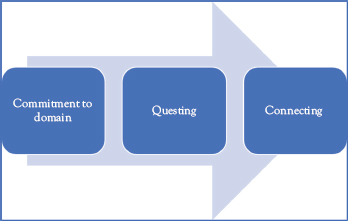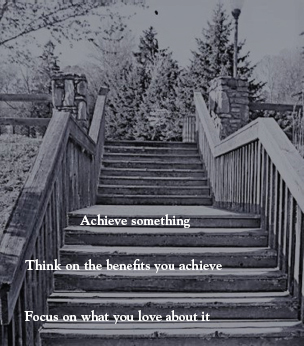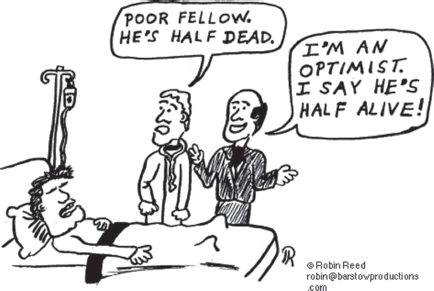Passion is energy.
Feel the power that comes from focusing on what excites you.
—Oprah Winfrey
It is quite easy to announce and share what is your principle, but it is quite difficult to sustain it, not impossible. Project management is my passion so I always try to feed up my passion in all the projects and initiatives I lead and I am engaged or dreaming about positive outcomes. In order to convert those projects into a reality, I need to be persistent because sometimes I may fail, and I need to cultivate my patience because all those efforts take time and dedication. In order to sustain my 3Ps, I need to be disciplined because daily facts and our environment are usually toxic, I mean, create or generate some obstacles to sustain your passion, persistence, and patience.
Some Stories to Share
Let me share with you the story of my career as a book author. Writing a book is a very challenging project because you need to transmit what you lived in a way in which your audience is able to understand, so you need to be careful about “how to express it.” My story is as follows: I always enjoyed writing summaries since I was a child. When I was hired by Fujitsu Spain as my first job I worked as a product support engineer for an American product and at the same time I was finishing my engineering degree. I took advantage of my job activities to write my final degree assignment. I dedicated a lot of time on a daily basis to write and edit it. I learned a lot from my mentor that time.
Then I moved to DEC (Digital Equipment Corporation) in Spain (Madrid office) and I started writing about software development and project management basics. I submitted my first article to a Spanish technical magazine and after some feedback and corrections from that magazine editors, my article was accepted and published. I received some comments from a colleague about if I copied the article from someone else. It was the first time I found a “dream killer.” Instead of demotivating me, that comment encouraged me to move forward. Every two or three months I submitted an article to that magazine and I learned a lot about how to be more concise writing an article.
Some years later I moved to Hewlett Packard in Spain, and I was responsible for the project management initiative there, so I took the initiative of writing a monthly newsletter to spread out the project management knowledge in that organization. I only wrote one page. I made a special effort of compiling my thoughts, ideas, and message in only one page, because people had not enough time to read more than one page. That initiative gave me the opportunity to read and research more, and also to learn how to address and customize my newsletters to my audience. Initially my target audience were project managers and managers from my department. Writing those newsletters monthly, after four years I had 48 newsletters written on different project management subjects. So, I thought why not to write a book? Then I decided to write it. I had a lot of material from my newsletters, I had managed many projects over the years, and I had researched about theory and definitions in the project management field.
I was blessed. I had all the ingredients to move forward. What I needed was first of all to have some time to compose my book and then to get an executive sponsoring that project. That time I was responsible for the Project Management Office (PMO) in my organization. That office was operating quite reasonably, but the management did not believe in project management, so I discovered that I would not be supported internally at all. Thanks to be responsible for the PMO, I had to travel worldwide so frequently and attended several conferences and congresses where I presented some papers. That situation allowed me to create a contacts network worldwide. That year I met one lady in one of the conferences outside Spain, and she gave me the idea of starting up a project management services company in Spain. One Mexican colleague contacted me, so I travelled to Mexico City and I decided to leave the company I worked for and create mine, and I did it at the beginning of 2002. In the meanwhile, I was writing my book and advancing during nights on the edits. Three months later I got an agreement with a multinational company in the United States (New York) and one of the parts of my agreement was to get my book published.
Then I moved forward and started my own company’s operations representing the services from the American company in Spain. My book was published six months later by “Lito Grapo” editors in Mexico DF (now called Mexico City). It was a well-received book because that time there were not much literature published in Spanish language on project management.
In that real story I maintained my passion over those years because I love my profession and I believe in that I was persistent writing for a while every day after hours during almost one year, and I used my patience to find my right sponsor to get my book published. A big part of your success comes from how you are able to maintain and sustain your passion, persistence, and patience.
From 2002 to 2004, I was representing an American company in Spain, but the financial crisis set in during 2003 so I needed to travel continuously outside Spain. I travelled to Mexico, France, Germany, Russia, Denmark, and several countries week after week. At the same time, I tried to manage my Spanish company and it was a continuous nightmare. My project management passion was still there but it was so stressful, time demanding, and I could stay with my family during many weekends. Then I made the decision of leaving the American company and continuing in my own. It was a difficult decision because I would not have the support from that US company anymore. In fact, I would be alone in front of the market again.
It took me close to one month to analyze the benefits and advantages that I would get letting go of the US company and moving forward on my own. I needed to use my patience here, because even when I left my US company and restarted mine, I was managing my old company and the new one at the same time. My US partner did not find a managing director for the Spanish office and I agreed to help them for a while. Then, I was applying my passion to move forward with my own company and strategy. My passion helped me to make the effort managing two companies at the same time for a four-month period. It was very heavy for my mind and body, and I needed to be persistent finding new customers for my own company because I was constrained on time and movements. But again, the application of my 3Ps (passion, persistence, and patience) were really helpful to overcome those obstacles.
Some Best Practices
The application of persistence to any task, interaction, or goal is often what distinguishes between those who are successful and those who fail in any endeavor. Indeed, a lack of persistence or “giving up too soon” is one of the most common reasons for failure in any endeavor.
We are complex creatures. I believe that hope and anguish can coexist and still create something truly amazing. Persistence is the ability to maintain action regardless of your feelings (Pavlina 2009). You press on even when you feel like quitting, until you achieve that important goal. I surprise myself every day. People give up too soon because they have wrong expectations of themselves and the outcome. They expect the way to be easy, and they are surprised when they find the reality to be the opposite. Their enthusiasm quickly melts and they lose heart. So, start your journey with the right expectation. And don’t underestimate the amount of time required either.
Everyone says they are doing something because they love it. My observation is that it is easier to love something when you are winning. I define my professional passion by three attributes that I consider as best practices: commitment to domain, questing, and connecting (Figure 3.1). Each of these attributes leads to behaviors that drive sustained performance improvement and help people integrate knowledge from professional networks and lessons from difficult challenges into a disciplined commitment toward making an increasing longer-term impact.
Commitment to domain: Long-term commitment can be understood as a desire to have a lasting and increasing impact on a particular domain and a desire to participate in that domain for the foreseeable future. Commitment to domain helps individuals focus on where they can make the most impact. Having domain context enables an individual to learn much faster, allowing for cumulative learning. This commitment, however, does not imply isolation or tunnel vision. Quite the opposite: These individuals are constantly seeking lessons and innovative practices from adjacent and new domains that have the potential to influence their chosen domain.

Figure 3.1 Three attributes of passion as best practices
Commitment to domain is important because it can carry an individual through the inevitable bumps and disappointments that come, even in good work environments, over the course of a career. For example, I am committed to my project management profession. I am a project manager practitioner over the years. I discovered I like writing and speaking in public too. Then I was exploring how to write and how to speak in public better and better. It took me some time and effort, but I am progressing on that purpose.
Questing: The questing disposition drives workers to go above and beyond their core responsibilities. Project managers with the questing disposition constantly probe, test, and push boundaries to identify new opportunities and learn new skills. Resourceful and imaginative, they experiment with novel ways of using the available tools and resources to improve their performance.
These project managers actively seek challenges that might help them achieve the next level of performance. If they cannot find the types of challenges that generate learning, individuals with a questing disposition are likely to become frustrated and move to another environment (such as a new team or organization) that does offer these opportunities. During my career I always tried to take some risk and apply my courage trying to do some things I was not totally prepared for. One example was my first talk in front of an English audience. To do that I was practicing and rehearsing my presentation in English for three months. I was not totally successful, but my audience congratulated me on my effort. Even when my delivery was not perfect, but it encouraged me to deliver public talks again and again to progress.
Connecting: The connecting disposition leads individuals to seek out others to help find solutions to the challenges they are facing. Although networking—connecting with and learning from others—is commonly understood as an effective way to advance, those with a connecting disposition seek deep interactions with others in related domains to attain insights that they can bring back into their own domain. Workers driven by a connecting disposition build connection, not to grow their professional networks but to learn from experts and build new knowledge and capabilities. My suggestion learned from experience is that you need to build up your network connections and maintain it. Put your focus on that and you will be more successful, but the key is not just connected but maintain your connections.
Project managers who exhibit all three attributes have what we have defined as the passion of the explorer. Because of their potential for dramatic impact in their organizations, management needs to get better at recognizing and cultivating passion in the workforce to transform their businesses. Passionate workers will thrive in the right work environment, and workers with some, but not all, of the attributes are key targets for internal talent development efforts to increase this limited stock of resilient workers.
Some Food for Your Mind
What is the meaning of “some food for your mind”? Every mind is lazy as a principle. Our brain is another muscle of your body. We are used to exercise the physical muscles but not as much the brain muscles. Are you familiar with mindfulness?
There are a couple of definitions about that:
• The quality or state of being conscious or aware of something1
• A mental state achieved by focusing one’s awareness on the present moment, while calmly acknowledging and accepting one’s feelings, thoughts, and bodily sensations, used as a therapeutic technique2
Recently received a call from a friend who wanted to know if I still loved my job with the same passion that I had for it when I first started working as a project manager. My answer was: A job is like a love affair; when you find one that you love passionately, you feel very strongly about it at first. You cannot wait to get to work and you do not mind spending most of your time on it. But as time goes by, your passion may be tempered. It does not go away altogether; you only replace it with affection, persistence, and patience. Any relationship is similar—you do not have the same passion that you did when starting out, but you do share a solid bond that is built on love, trust, and togetherness.
The key to sustaining passion for your job as a project manager is the same as maintaining it in a relationship—you need to work at it (Figure 3.2). And to do this, you need to:
• Focus on what you love about it: Just like you would focus on the positives of your relationship with your spouse or significant other to make it work and sustain your interest in each other, so too must you think more about the good aspects of your job in order to continue to do it with the same amount of passion and interest that you initially had for it.
• Think of the benefits you achieve: When you think about the good salary you’re being paid, the convenient work timings, your friendly colleagues and all the other aspects of your job that people consider advantages, you tend to feel better about it even though you do not have the same passionate attitude about it as you originally did.

Figure 3.2 Sustaining passion
• Achieve something: When you are able to achieve significant successes on the job, when your work continues to bring in praise and acclaim, and when you know that you are making a positive difference to your organization, it’s easy to smile on the job and be passionate about it every day.
It is important that you continue to love your job, because the minute you lose interest, you become less efficient and start making mistakes, which could turn out to be costly in more ways than one. So please work on sustaining your passion for what you do, and watch work turn out to be much more than just a job.
Suggested Exercises to Do
We cannot force people to become passionate. A team leader needs to create the right conditions for passion to emerge. Those conditions need to be nurtured or tended to, not unlike a gardener creating the right conditions for his plants to flourish.
Let’s reflect about it. Gardeners do not make plants grow—the genetic coding inside each plant does that. A gardener simply creates conditions that are conducive to plant growth. If those conditions are maintained then growth happens. A conscientious gardener frequently evaluates of the garden. Is fertilizer needed? Does the garden need more or less water? Are there any unwanted pesticides or diseases?
I suggest you to practice five exercises in order to cultivate and sustain your passion:
Exercise 1: Revisit your childhood (Figure 3.3)
• What did you love to do? It is amazing how disconnected we become to the things that brought us the most joy in favor of what is practical.
• Can you remember how did you enjoy when you were a child?
• Did you play alone or with some friends?
• Did you enjoy the adventures or did you prefer the quietness?
Those type of questions need to be answered to help you understanding what you really loved those times. Try to practice this exercise several times.

Figure 3.3 Revisit your childhood
Exercise 2: Make a creativity board (Figure 3.4)
Start by preparing a large poster board, and post the words you like in the center and create a collage of images, sayings, articles, poems, and other inspirations. The idea behind of that is that when you surround yourself with images of your intention—who you want to become or what you want to create—your awareness and passion will grow.
Images are powerful reminders of the things or actions we enjoyed and made feel us happier.
Exercise 3: Make a list of people who are where you want to be (Figure 3.5) Study people who have been successful in the area you want to pursue. Study them, figure out how and why they are able to remain successful when everyone else is folding and then set up structures to emulate them. It will take you some time, but it is worth.
Exercise 4: Start doing what you love, even without a business (Figure 3.6) Do what you enjoy, even if you have not yet figured out to monetize it. Invest time and effort working on that. For instance, I like public speaking and I am focused on improving my skills to do that day after day. I am always looking for opportunities to speak on public even as a volunteer sometimes.

Figure 3.4 Make a creativity board
Figure 3.5 List of people who are where you want to be

Figure 3.6 Do what you love
Exercise 5: Take a break from business thinking (Figure 3.7)
While it might feel uncomfortable to step outside of business mode, the mind sometimes needs a rest from such bottom-line thinking. Rest for a while and you will return with some more energy and fresh ideas. From time to time everybody needs some time off. Sometimes professionals are obsessed about not decrease their productivity, but you need some rest from time to time to recharge your batteries.
Figure 3.7 Take a break
Chapter Summary
From the ideas, experiences and suggestions shared in this chapter, I would like to remark some of them:
• It is quite easy to announce and share what is your principle. It is quite difficult to sustain it, not impossible.
• The application of my 3Ps (passion, persistence, and patience) were really helpful to overcome those obstacles.
• The key, psychologists say, may lie in the difference between two mindsets: harmonious passion and obsessive passion.
• I define my professional passion by three attributes that I consider best practices: commitment to domain, questing, and connecting.
• The key to sustaining passion for your job is the same as maintaining it in a relationship—you must work at it.
• A team leader needs to create the right conditions for passion to emerge. Those conditions need to be nurtured or tended to, not unlike a gardener creating the right conditions for his plants to flourish.
Pavlina, S. 2009. Personal Development for Smart People: The Conscious Pursuit of Personal Growth.
1 Consciousness | Definition of Consciousness by Merriam-Webster https://merriam-webster.com/dictionary/consciousness
2 Mindfulness | Definition of mindfulness in English by Oxford Dictionaries https://en.oxforddictionaries.com/definition/mindfulness


